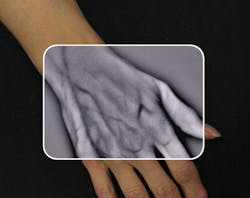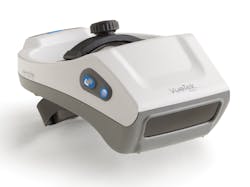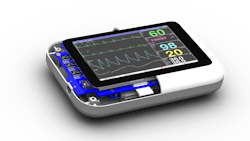Bruce Dalton and Larry Bell
In recent years, significant advances have been made in the development of medical imaging instrumentation, particularly relating to visualization of anatomical structures. Much of this progress is based on the improvements of imagers and advanced image processing capabilities that can extract signals and information that would otherwise be hidden. Expensive capital equipment for magnetic resonance imaging (MRI), computed tomography (CT), and high-resolution x-ray get the most attention and are most familiar. However, equally impressive gains can be realized in more reliable, safer, and lower-cost portable imaging systems developed from components originally designed for a wide range of nonmedical industries. These include low-cost, high-intensity light-emitting diodes (LEDs) and miniature high-resolution cameras, coupled with the ever-advancing capabilities in image processing-from both a hardware and software perspective.
Balancing benefits and challenges
Leveraging cost-effective components from consumer and industrial products can offer tremendous savings potential for medical devices. These retail markets rely on huge production volumes to achieve low part prices by amortizing high development costs over a large number of components. In choosing components from nonmedical industries, several challenges must be recognized and addressed.
The first challenge is to ensure that components can meet the quality requirements necessary for a medical device. Depending on the original intended use, this can range from a relatively straightforward effort to a thorough and complete validation exercise. For instance, components that are intended for use in the aerospace or military areas typically have the necessary validations and genealogy documentation to support their use in a medical device. Components from the consumer markets typically do not have this lineage and therefore cannot be used without verification through independent test results.
Another challenge is to address the lifecycle of a component. Parts that are regularly used in the military and automotive industries typically have fairly long life cycles, whereas components used in the consumer markets may have a product life cycle of 12–24 months. When factoring in the length of time that a medical device needs for conceptual development, engineering design, prototype builds, product verification, test, and validations, it is not unusual for a potential consumer market component to be phased out of production availability around the time that the medical device is FDA-approved and entering the market. Additionally, regulatory controls make changing components a lengthy and potentially costly process, necessitating careful planning during the design and sourcing of commercial components.
Case study: Making of an industry 'first'
A client (VueTek Scientific) recently approached Enercon Technologies with a request to develop a portable vascular imaging product that would allow a medical practitioner to visualize and observe subcutaneous vasculature in real time (see Fig. 1). Existing technologies and products to perform this function exhibited a number of deficiencies, including lack of portability, high purchase price, and limitations in performance.
Enercon reviewed the client intellectual property and determined that all of the necessary technologies were readily available in some form from various industry segments. A previously designed proof-of-concept tabletop device had proven that the idea had merit. However, meeting the desired price and mobility targets presented an interesting challenge to the Enercon medical design team.
It was recognized early on that power consumption needed to be tightly controlled if the weight and battery life requirements were to be met. One of the key requirements for the product was that it had to be lightweight enough to be worn on the head of typical users (such as nurse practitioners, anesthesiologists, and first responders) for extended periods of time. The client also requested that any battery system be incorporated into the headset itself so there would not be any external cables or power supplies.
Before the engineering phase began, Enercon spent a considerable amount of time working with the client and potential end customers to determine what is the appropriate comfort (in the form of weight and balance) vs. battery life. Once these requirements were identified and the remaining product specifications documented, detailed engineering could commence.
Two items required a significant amount of power: the illumination system and the video processor. The illumination system certainly needed to be LED-based, but a thorough search of available devices was still necessary to identify a LED that met the efficiency, intensity, and wavelength requirements. Even with a high-efficiency device in place, effort was needed to develop a precise optical focusing system to ensure that the viewing areas were sufficiently illuminated.
The second major energy drain was the digital signal processing elements that receive the image from the camera, execute a number of image extraction and enhancement algorithms, and present the modified image to the display device. Fortunately, significant strides have been made in the semiconductor industry to increase the computing power of these devices while keeping power consumption low. Several platforms were evaluated to determine the optimum level of video throughput and quality against battery life. An additional optimization step was done later in the development process to tweak the processing clock rate to further improve battery life.
Once the basic product requirements and architecture were defined, the medical design group reached out to their Enercon counterparts in other market segments for alternative component solutions. After careful study and prototyping activity, they converged on a solution that included a number of components that are typically not associated with medical equipment, but allowed for a final design that met all pricing, weight, size, and cost requirements. The imaging camera selected was from the industrial controls market, the illuminators came from telecommunications use, the display was developed for the virtual reality sector, battery chemistry was taken from the laptop computer realm, and the image-processing algorithms were adapted from consumer digital photography.
The final system was then carefully packaged into a lightweight, molded plastic housing that included the user controls, adjustable display screen, removable battery, hidden illumination system, and adjustable head-basket to comfortably sit on the user's head. The design of this housing included features that were identified earlier though industrial design and human factors analysis. Enercon worked closely with the client to ensure that the overall user experience met the needs of the market.
The finished device represents the first FDA-approved, head-mounted, battery-operated vascular imaging system for the hospital and first responder markets (see Fig. 2).The future of medical imaging
Rapid acceptance and utilization of consumer smartphone and tablet devices, along with increased pressure to reduce healthcare costs, will increase the acceptance of more point-of-care (POC) diagnosis and self-therapy by the patient. As the patient becomes more involved in the process of medical imaging monitoring; inevitably, medical imaging devices will borrow more of the look and feel of consumer/industrial imaging devices. They may actually leverage smartphones or tablets, or else operate like these consumer devices, using familiar touchscreen swipes/gestures, for instance (see Fig. 3).With this development, electronic product development experts like Enercon will continue to borrow and adapt technology developed in other markets for use in next-generation medical devices. This further convergence will create several tangible benefits. The first and most obvious benefit is that more cost-effective medical devices can be developed-and developed more quickly without lengthy research and development (R&D) activity. In addition, the more that medical devices have the look and feel of consumer devices, which are rapidly becoming an integral part of home and work life for both patients and healthcare providers, the learning curve for adapting new medical devices will become much shorter. Adaption rates will inevitably increase, further fueling the development of even better solutions.
Bruce Dalton is engineering director and Larry Bell is VP of sales & marketing at Enercon Technologies, an integrated electronics product development and contract manufacturing company (Gray, Maine; www.enercontechnologies.com). Contact Mr. Bell at [email protected].


